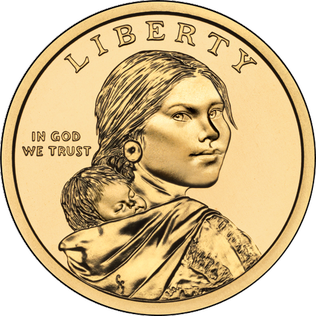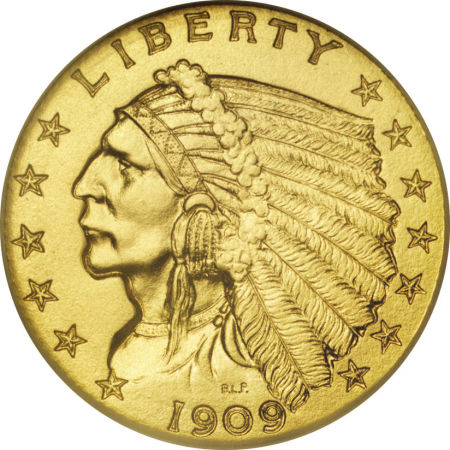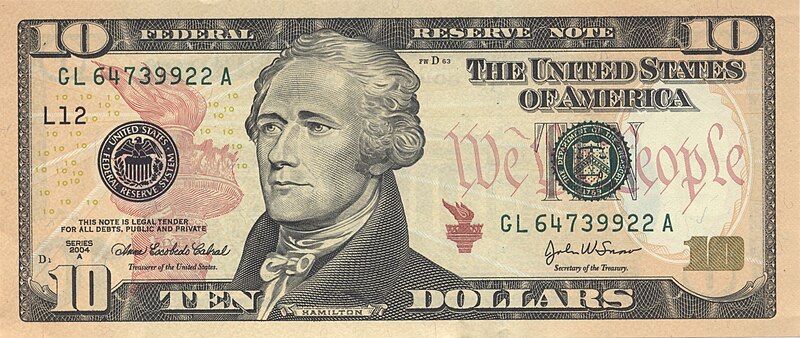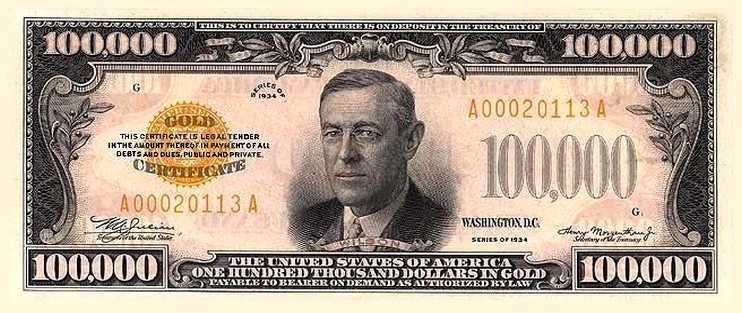Coins

The $0.005 Coin (Half Penny): The smallest denomination of the dollar ever made. This coin was made back in the 1800s when the dollar was worth significantly more than it is now, where the cent could actually buy you something. Once a common coin, inflation rendered this coin practically worthless and it was gradually phased out of circulation. However, if you were to find one today you could probably sell it for a pretty significant amount. The obverse has a depiction of a generic "lady liberty" as was common in the 1800s, before it was considered proper to have depictions of existing people on your currency while the reverse has a design encircling the word "Half Cent".

The $0.01 Coin (Penny): What today's American will think of when they think of the smallest division of the dollar. This coin is commonly seen today and often thrown away when recieved as change. Once made of copper, now made of an alloy of zinc and copper since the value of pure copper in a penny exceeds its own face value. Calls have been made to cease production of this coin do to inflation rendering its value to nearly nothing. The obverse has a depiction of Abraham Lincoln while the reverse has commonly had a depiction of the Lincoln Memorial though has changed recently to depict a sheild. A long time ago, the coin also depicted a generic figure like the Half Penny.

The $0.05 Coin (Nickle): Also commonly used today, the coin depicts Thomas Jefferson on the obverse and commonly Monticello on the reverse, Jefferson's plantation, though this has changed as well throughout the years. The "Liberty Head" series nickle from the 1800s is said to be one of the most valuable coins in the US in the eyes of collectors.

The $0.10 Coin (Dime): The name meaning "tenth" as in a tenth of a dollar. This is actually the smallest US coin in terms of size but not value. Dimes in the past were much larger and made of actual silver while moden coins are small, made of nickel, and depict Franklin D Roosevelt on the obverse, and a torch on the reverse.

The $0.25 Coin (Quarter): The name referring to its value being a quarter of a dollar. The most commonly used coin in the US today. Most popularly has George Washington on the obverse and a bald eagle on the reverse, though the past decade saw the "state" series where the reverses of the coins depict each state in the US.

The $0.50 Coin (Half Dollar): One of my favorite coins and one that sadly doesn't see very much use. The half dollar is the largest coin still minted by the US and depicts John F Kenndy on the obverse and the Great Seal of the United States on the reverse. Though this is the largest coin still minted in the US, the largest ever minted in the US was the Dwight D Eisenhower dollar in the 70s.



The $1.00 Coin (Dollar Coin): An uncommonly used yet increadibly frequently redesigned coin, the most recent being the gold colored dollars with each of the presidents depicted on them. There have been many attempts to get this coin to replace the $1 bill, though all of them proving unsucessful. This is the highest denomination of coin minted in the US today. Prior versions of this coin were the Susan B Anthony Silver Dollar and the Sacagawea Gold Dollar.

The $2.50 Coin (Quarter Eagle): The first of the discontinued, ultra-rare, solid gold, and presently extremely valuable high denomination coins. The Eagle is a slang term meaning "Ten Dollars" so the name Quarter Eagle means a quarter of ten dollars, or $2.50. All coins of this denomination and higher depicted generic portraits, being of a generic Native America, or a generic Lady Liberty.

The $5.00 Coin (Half Eagle): Worth half an Eagle, or $5. These coins contained what was at the time, their face value in gold, which today is FAR higher than what their face value was at the time. This combined with their extreme historical value, can cause these Eagle coins to be worth hundreds of thousands of dollars to collectors today.

The $10.00 Coin (Eagle): Same as the other Eagles, but worth $10. The reverse depicts the Great Seal of the United States and the words "Ten Dollars".

The $20.00 Coin (Double Eagle): The highest denomination of coin ever issued for general circulation in the US. These can go for stellar amounts of money at collector auctions today.
Bills

The $1 Bill: Probably the most common form of the dollar in circulation. The $1 Bill is interesting since it is probably the bill that has changed design the least amount of times since it was introduced, aside from the $2 Bill. The bill has virtually no anti-counterfeiting measures and has George Washington on the obverse, and the famous "All Seeing Eye" and Great Seal on the reverse.

The $2 Bill: The rarest dollar bill that is still printed regularly by the US. The two has Thomas Jefferson on the obverse and the signing of the Declaration of Independence on the reverse. Rarely used due to it's unusual denomination and rarity.

The $5 Bill: Commonly used bill today, the lowest of the bills that saw redesign in the last decade. Has a watermark and various features to prevent counterfeiting. Has Abraham Lincoln on the obverse and the Lincoln Memorial on the reverse, just like the Penny. This bill was also released as part of the Silver Certificate Series in the early 1900s, where it could be redeemed for its face value in silver.

The $10 Bill: Common bill that has first Secretary of the Treasury Alexander Hamilton on the obverse and the Treasury Building on the reverse. Has the same anti-counterfeiting features as the $5. This bill was also released as part of the Silver Certificate Series in the early 1900s, where it could be redeemed for its face value in silver.

The $20 Bill: Another of the most commonly used bills in the US. Has Andrew Jackson on the obverse and the White House on the reverse.

The $50 Bill: Slightly less commonly used bill. Has General and President Ulysses S Grant on the obverse and the Capitol on the reverse.


The $100 Bill: The highest denomination of dollar that is still printed regularly today, though far from the highest dollar bill in general. Has Benjamin Franklin on the obverse and Independence Hall on the reverse. This bill was also the lowest denomination of the elusive 1934 Gold Certificate Series, which was money that was only to be used by the Federal Reserve and Treasury and was created to replace the gold bullion held by the Federal Reserve when the US was preparing to leave the Gold Standard.

The $500 Bill: The lowest of the large denomination bills that are not printed today. The obverse has President William Mckinley on the obverse and an abstract design that reads "Five Hundred Dollars" on the reverse.


The $1,000 Bill: The rare $1,000 bill has Grover Cleveland on the obverse and an abstract design that reads "One Thousand Dollars" on the reverse. This bill was also included in the 1934 Gold Certificate Series, which had a gold colored seal and had a gold colored reverse.

The $5,000 Bill: Possibly the most valueable dollar bill to collectors due to the fact that there are actually a fewer number of these than $10,000 bills. The obverse has President James Madison and the reverse has an abstract design that reads "Five Thousand Dollars".


The $10,000 Bill: The highest denomination of currency that was released for use into general circulation in the US. The obverse has Cheif Justice and Treasurer Salmon P Chase on the obverse and an abstract design on the reverse that reads "Ten Thousand Dollars". This bill was also included in the 1934 Gold Certificate Series, which had a gold colored seal and had a gold colored reverse.

The $100,000 Bill: The king of bills and the king of denominations. The $100,000 was only printed as part of the 1934 Gold Certificate series and thus could only be used by the Federal Reserve and the Treasury. This gigantic bill has President Woodrow Wilson on the obverse and an abstract design on the reverse that reads "One Hundred Thousand Dollars". The bill, including the seal, serial numbers, and entire reverse feature gold ink being Gold Certificate series, which adds to the valuable appearance of the bill. The Federal Reserve has admitted to holding over ten billion dollars in Gold Certificates to this day, and so there are probably still many of these in existence, though only held by the Treasury and Fed.
This concludes my guide to the United States Dollar. :)
Hah, nice.
ReplyDelete-Ali
Using BullionVault you may buy physical gold & silver by the gram at current exchange exchange rates.
ReplyDeleteRegister your free account today and get 4 grams of free silver as a joining bonus.